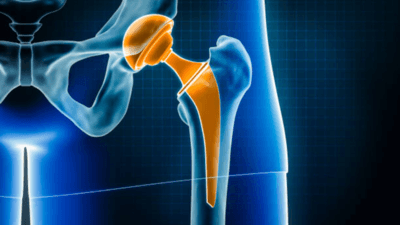Understanding Postmenopausal Osteoporosis: A Silent Disease Affecting Millions of Women Worldwide
Times of India•

Full News
Share:
Menopause is the permanent cessation of menstruation due to the loss of ovarian follicular activity. It is a natural physiological event — a phase in a woman’s life marked by significant hormonal changes that can be associated with several short-term and long-term health effects.During this time, women may experience various symptoms:Vasomotor symptoms: Hot flashes, night sweatsPsychological symptoms: Irritability, mood swings, anxiety, or sleep disturbancesUrogenital atrophy: Vaginal dryness, recurrent urinary tract infections, and painful intercourseDermatological symptoms: Dry skin, hair thinning, and brittle nailsHowever, one of the most serious long-term consequences of menopause is progressive bone loss, known as Postmenopausal Osteoporosis. This condition occurs due to a sharp decline in estrogen levels after menopause, leading to increased bone turnover, accelerated bone loss, and a higher risk of fractures.Estrogen plays a protective role in bone metabolism by promoting bone formation (via osteoblasts) and reducing bone resorption (via osteoclasts).When estrogen levels drop, bone breakdown exceeds bone formation, resulting in weakened bones. This is a major health problem affecting millions of women worldwide — approximately 1 in 3 postmenopausal women are affected — often called a “silent disease” because it remains unnoticed until a fracture occurs.Clinical featuresOften asymptomatic until the first fractureBack pain due to vertebral compression fracturesLoss of height and development of kyphosis (stooped posture)Fragility fractures of the wrist, hip, or spineAssociated muscle weakness, imbalance, and increased fall riskDiagnosisBone Mineral Density (BMD) Evaluation: Using DEXA (Dual-Energy X-ray Absorptiometry) scanLaboratory Tests: Serum calcium, phosphate, and vitamin D levels to rule out secondary causesFracture Risk Assessment: Using the FRAX tool to estimate the 10-year risk of major osteoporotic and hip fracturesRisk factorsModifiableLow calcium intakeSmokingExcessive alcohol useSedentary lifestyleLong-term corticosteroid useLow Body Mass Index (BMI)Non-ModifiableFamily history of osteoporosis or fracturesCaucasian or Asian ethnicityIncreasing ageEarly menopauseManagement1. Lifestyle and General MeasuresEnsure adequate calcium intake (1,000–2,000 mg/day)Vitamin D supplementation (800–1,000 IU/day)Regular weight-bearing and muscle-strengthening exercisesSmoking cessation and moderation of alcohol consumptionFall prevention strategies (home safety, vision checks, balance training)2. Pharmacologic TherapyBisphosphonates: First-line therapy for most womenSERMs (Selective Estrogen Receptor Modulators): Effective in preventing vertebral fracturesHormone Replacement Therapy (HRT): May be considered for early postmenopausal women with symptoms, though not first-line due to risks such as thromboembolism and breast cancerFollow-up and monitoringRepeat DEXA scan every 2 yearsMonitor vitamin D and calcium levelsEnsure adherence to therapy and evaluate for side effectsPeriodic reassessment of fall risk and lifestyle habitsPreventionEarly identification of at-risk women during the perimenopausal periodLifestyle interventions: balanced diet, regular exercise, and smoking/alcohol reductionEncourage regular health check-ups,bone density screening, and patient educationPostmenopausal osteoporosis is a major cause of morbidity in aging women — but it is largely preventable. Early detection, patient education, lifestyle modification, and appropriate pharmacologic treatment are the cornerstones of management. A proactive bone health assessment during and after menopause can help prevent the devastating consequences of fragile bones and fractures, ensuring a stronger, healthier future for women everywhere.Dr. Preeti Prabhakar Shetty, MBBS, MD - Obstetrics & Gynaecology, Senior Consultant Obstetrician,Gynecologist, Apollo Hospitals, Bannerghatta Road, Bangalore
Disclaimer: This content has not been generated, created or edited by Achira News.
Publisher: Times of India
Want to join the conversation?
Download our mobile app to comment, share your thoughts, and interact with other readers.